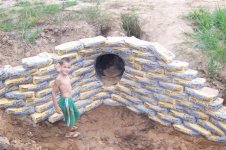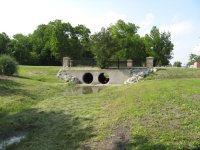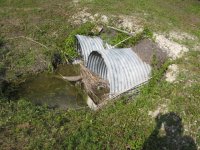yep that been my thinking all along about the length and double culverts.
I didn't put these inI took over maintaining the property a while back. You cannot tell from the pic but this is actually an upscale neighborhood. There are suburbs all around it. This small stip of land is landlocked by lawns, landscaped areas and ornamental fences. So when I say mowers only it's pretty much the case.
I think my 1st step is going to be cleaning it out so I can pull these culverts out. Start from the beginning.
I didn't put these inI took over maintaining the property a while back. You cannot tell from the pic but this is actually an upscale neighborhood. There are suburbs all around it. This small stip of land is landlocked by lawns, landscaped areas and ornamental fences. So when I say mowers only it's pretty much the case.
I think my 1st step is going to be cleaning it out so I can pull these culverts out. Start from the beginning.




